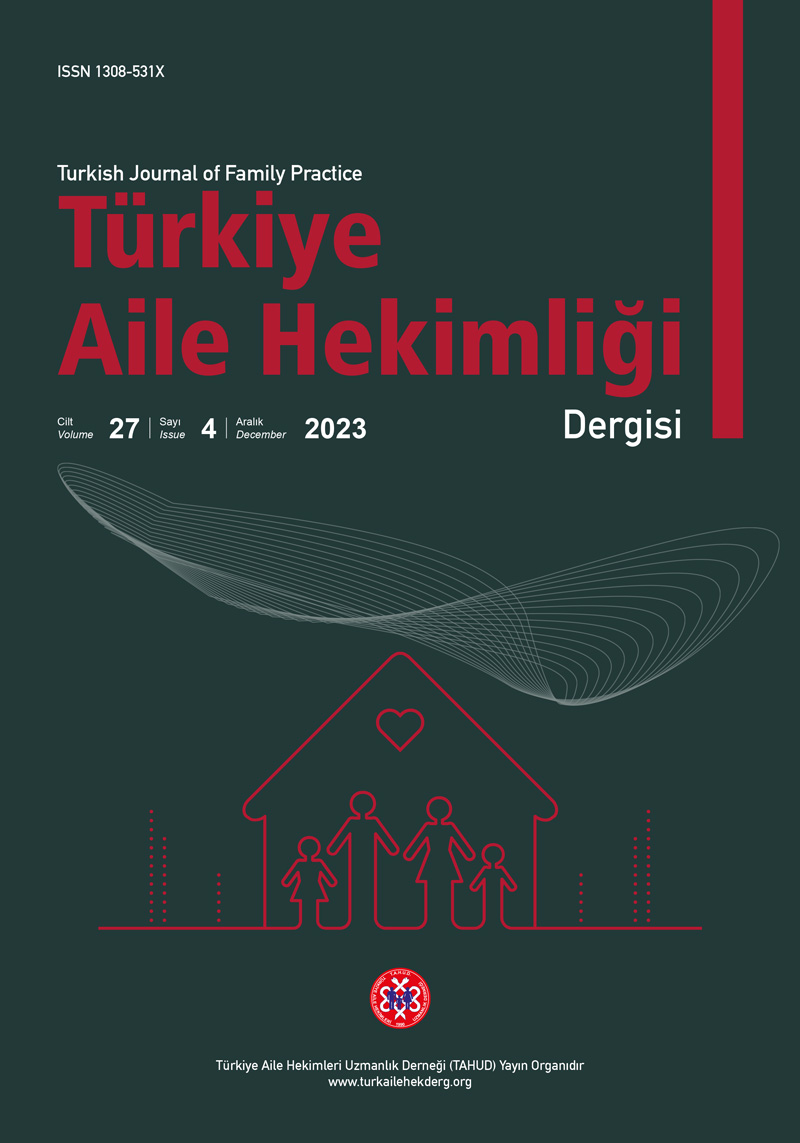Abstract
Objective: The aim of the study was to identify eating disorders in individuals who applied to Family Medicine with a fast and reliable scale and to evaluate the relationship of eating disorders with the health perception of individuals.
Methods: Individuals who applied to family health centers selected in the city center between 01.12.2022 and 31.01.2023 for any reason were included in this descriptive and cross-sectional study. “Personal Information Form”, “SCOFF Eating Disorder Scale” and “Health Perception Scale” were applied to the patients whose consent was obtained.
Results: Of the 406 patients included in the study, 66.7% (n=271) were female and the mean age was 40.00±13.28 (min=18, max=63) years. 41.9% of the participants (n=170) had suspected depression and 13.1% (n=53) had an eating disorder risk. Eating disorder risk was found in 14.8% of women (n=40) and 9.6% of men (n=13). Eating disorder risk was higher in those who thought they were not at their ideal weight (p<0.001). The factors affecting the risk of eating disorders were found to be health perception, age, employment status, depressive symptoms and ideal weight desire. In particular, being unemployed increased the risk of eating disorders by 13 times and having depressive symptoms increased the risk of eating disorders by 3 times.
Conclusion: To reduce the frequency of eating disorders and the problems associated with them, early diagnosis is just as important as the right approach. Eating disorders should be questioned at any age, in both sexes, at any weight, and especially in those with depressive symptoms. Family physicians, who provide continuous, comprehensive service to their patients and approach them holistically, should be aware of this issue.
Keywords: Family medicine, eating disorders, health perception, early diagnosis
Copyright and license
Copyright © 2023 The Author(s). This is an open access article distributed under the Creative Commons Attribution License (CC BY), which permits unrestricted use, distribution, and reproduction in any medium or format, provided the original work is properly cited.










